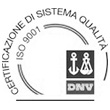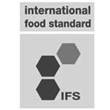Basil
(Ocimum basilicum)
Basil – Ingl., Basilikumkraut – Ted., Basilic – Fr, Albahaca – Sp., Базилик - Russ.
Basil, like mint and oregano, belongs to the Labiatae family and is a native to tropical Asia. Today the plant is widespread in Europe, the Americas and tropical Africa. Basil leaves are oval; its color changes from deep green to dark green with a reddish hue depending on the different varieties. Its flowers are white or pink.
basil leaf 30 mesh, 1 mm basil leaf, basil powder.
Food Composition
Basil leaves contain tannins, saponins and glucose.
Its essential oil is composed of eugenol, estragole, basil, camphor, linalool, ocimene, cineol, sesquiterpenes and other substances.
Culinary Use
Basil and parsley are the most widely used herbs in Italian cooking. Basil leaves are used for the preparation of the classic tomato and basil pasta and to flavor sauces, cold dishes and salads . It is the basic ingredient for the preparation of the world-famous” pesto”.
Healing Effect
Basil is an excellent natural remedy with its stimulant, tonic, and digestive properties.It relieves migraines, nervous insomnia, neurosis and other disorders of the nervous system. It is helpful for th food allergies and stomach cramps.
- Herbal teas of basil sooths colds, headaches, abdominal cramps, nervousness.
- An infusion of basil is used to make gargles, which can soothe a sore throat due to its antimicrobial properties.
- Basil tincture of basil is an excellent tonic lotion for skin.
Preservation
Dried leaves of basil are kept in a cool, ventilated, poorly lit and dry place.





